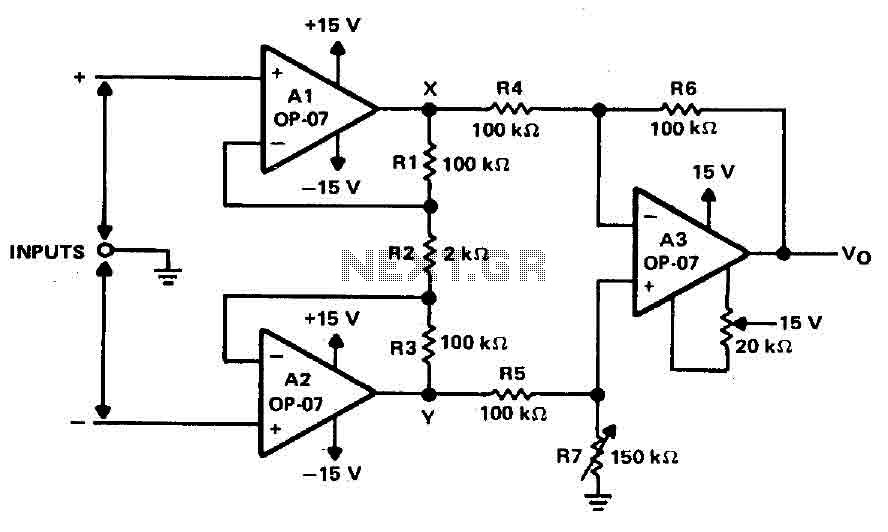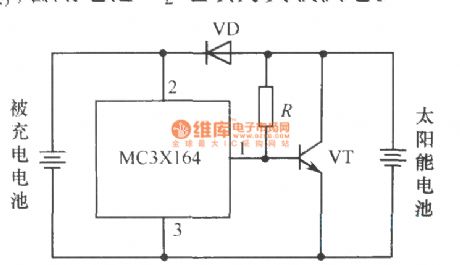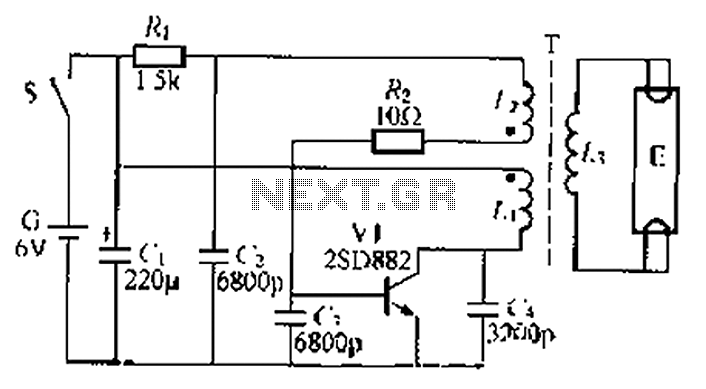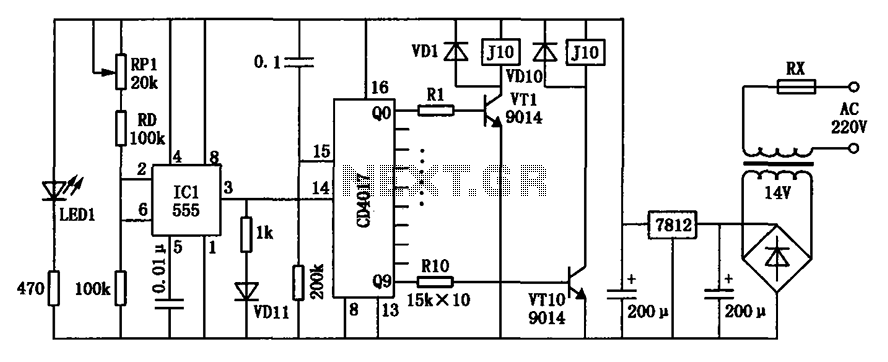
Three astable circuit diagram
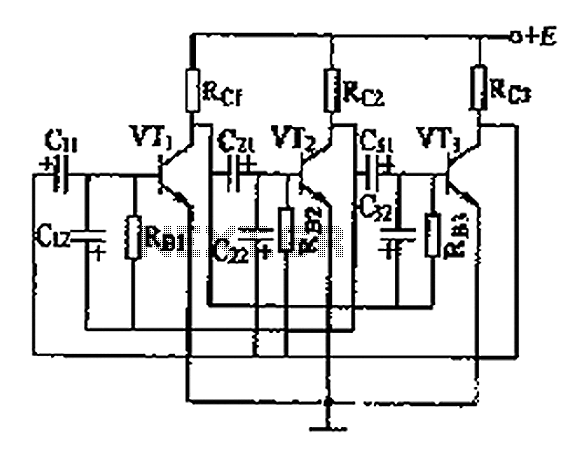
The three astable circuit is illustrated, demonstrating that each level of the transistor's base is connected by a capacitor between the two levels, ensuring tight coupling. Additionally, each base electrode is biased through a resistor (Rb) connected to the collector. This configuration guarantees that only one transistor is in saturation at any given time, while the others remain in the OFF state. Consequently, as one transistor saturates, it activates the next in sequence.
The astable multivibrator circuit consists of three transistors arranged in a cascading configuration, each serving as a switch that alternates between on and off states. The coupling capacitors between the transistor bases facilitate the timing and synchronization of the switching operation. When one transistor is driven into saturation, it allows current to flow through the collector-emitter junction, effectively turning on the next transistor in the sequence.
The biasing resistors (Rb) connected to the base of each transistor ensure that they operate within their active regions during the switching process. This arrangement prevents multiple transistors from being saturated simultaneously, thereby maintaining a stable oscillation pattern. The timing of the transitions is determined by the values of the resistors and capacitors used in the circuit.
In practical applications, this astable multivibrator can be utilized for generating square wave signals, timing applications, or as a clock pulse generator in digital circuits. The frequency of oscillation can be adjusted by modifying the capacitor values or the resistor values, allowing for versatile operation in various electronic systems. Overall, the design ensures reliable performance and efficient switching behavior, making it suitable for a wide range of electronic applications. As shown for the three astable circuit. From this circuit can be seen, each level of the base of the transistor by a capacitor connected between the two levels are tightly coup led by a capacitor and the collector to other levels, and at all levels of the base electrode bias resistor Rb and stage connected to the collector. This ensures that at the same time only one tube is saturated, while the other levels to the OFF state, a saturated tube front to the rear and then click Convert.
The astable multivibrator circuit consists of three transistors arranged in a cascading configuration, each serving as a switch that alternates between on and off states. The coupling capacitors between the transistor bases facilitate the timing and synchronization of the switching operation. When one transistor is driven into saturation, it allows current to flow through the collector-emitter junction, effectively turning on the next transistor in the sequence.
The biasing resistors (Rb) connected to the base of each transistor ensure that they operate within their active regions during the switching process. This arrangement prevents multiple transistors from being saturated simultaneously, thereby maintaining a stable oscillation pattern. The timing of the transitions is determined by the values of the resistors and capacitors used in the circuit.
In practical applications, this astable multivibrator can be utilized for generating square wave signals, timing applications, or as a clock pulse generator in digital circuits. The frequency of oscillation can be adjusted by modifying the capacitor values or the resistor values, allowing for versatile operation in various electronic systems. Overall, the design ensures reliable performance and efficient switching behavior, making it suitable for a wide range of electronic applications. As shown for the three astable circuit. From this circuit can be seen, each level of the base of the transistor by a capacitor connected between the two levels are tightly coup led by a capacitor and the collector to other levels, and at all levels of the base electrode bias resistor Rb and stage connected to the collector. This ensures that at the same time only one tube is saturated, while the other levels to the OFF state, a saturated tube front to the rear and then click Convert.
